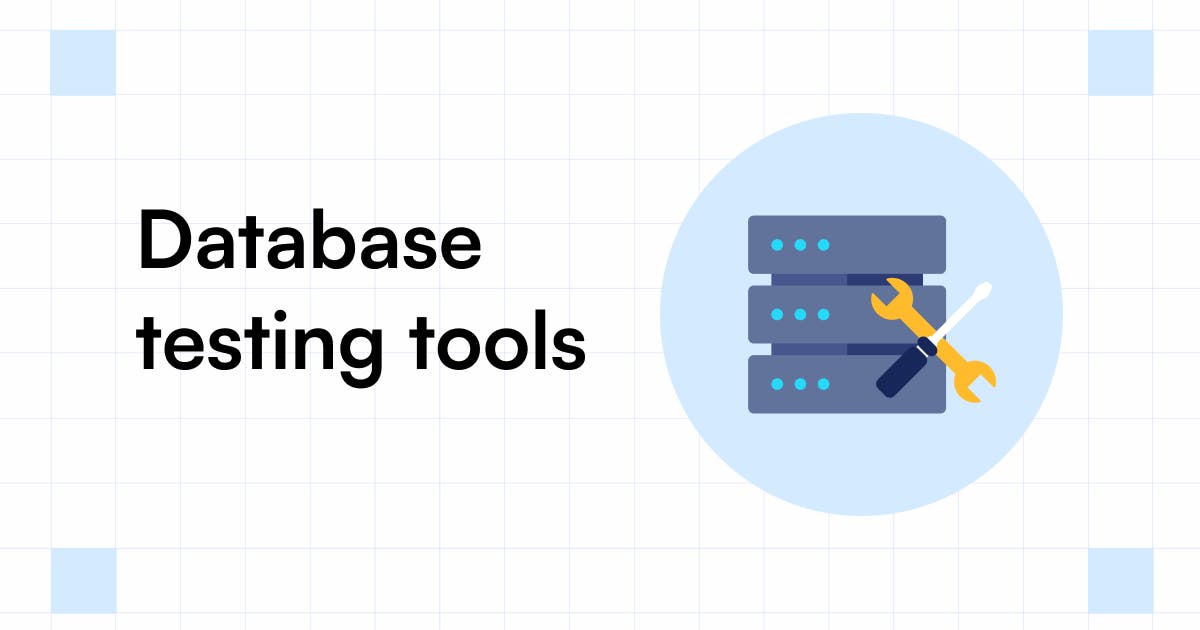Introduction:
Database testing is a crucial aspect of software quality assurance (QA) engineering. As a QA engineer, your role is to ensure that the software application interacts seamlessly with the underlying database, maintaining data integrity and reliability. In this article, we will explore the fundamentals of database testing and provide valuable insights for QA engineers to excel in this domain. Let's dive in! 💻🔍
Understanding Database Testing 📚:
Database testing involves verifying the correctness, performance, and security of the database system. It includes validating data accuracy, testing data manipulation operations, assessing data integrity constraints, and evaluating database performance under various scenarios. By conducting rigorous database testing, QA engineers can identify potential issues early on and ensure the software's stability and functionality.
Essential Database Testing Techniques 🧪:
a. Data Integrity Testing: Verify if data is stored correctly, ensuring that it meets the defined constraints and validations. Perform tests to assess data integrity in terms of completeness, accuracy, and consistency.
b. Data Manipulation Testing: Test database operations like insert, update, and delete to ensure data is being correctly manipulated and reflect the desired changes.
c. Performance Testing: Evaluate the database's performance by analyzing its response time, throughput, and scalability. Stress testing and load testing can help identify bottlenecks and optimize query performance.
d. Security Testing: Assess the database's security mechanisms, including access control, authentication, encryption, and data privacy. Validate the effectiveness of security measures to protect sensitive information.
- Database Testing Tools and Technologies 🛠️:
a. SQL: Structured Query Language (SQL) is essential for writing database queries and performing data validation during testing. Familiarity with SQL commands is crucial for QA engineers to efficiently interact with databases.
b. Test Data Management Tools: Tools like DTM(Data Test Manager) or DTM Data Generator can be used to create and manage test data, ensuring test coverage across various scenarios and data conditions.
c. Performance Testing Tools: Tools such as Apache JMeter, LoadRunner, or Gatling can simulate multiple users and measure the performance of database queries, identifying any performance bottlenecks.
d. Security Testing Tools: Tools like IBM Security AppScan, OWASP ZAP, or Nessus can help in evaluating database security vulnerabilities and ensure robust protection.
- Best Practices for Database Testing ✅:
a. Test with Realistic Data: Use real-world data scenarios during testing to simulate actual user behavior and ensure accurate results.
b. Test Scalability: Validate the database's ability to handle increasing data volumes and user loads to ensure optimal performance even during peak usage.
c. Test Recovery and Backup: Conduct tests to ensure data recovery and backup mechanisms are in place to avoid data loss or corruption.
d. Test Compatibility: Verify the compatibility of the database with different operating systems, browsers, and hardware configurations.
- Challenges and Tips for Effective Database Testing 🚀:
a. Data Consistency: Ensure data consistency across different modules and applications that interact with the database.
b. Test Environment: Create a dedicated testing environment that mirrors the production environment closely to identify any discrepancies or issues early on.
c. Test Coverage: Aim for comprehensive test coverage to uncover hidden issues or edge cases that might impact database functionality.
d. Collaborate with Developers: Establish effective communication and collaboration with developers to understand the application's data requirements and design appropriate test cases.
Here are a few popular free and open-source tools for database testing:

DbUnit: DbUnit is a widely-used framework for unit testing database-driven applications. It provides features to set up and tear down test data, compare expected and actual database states, and perform assertions on data integrity.You can find DbUnit at https://dbunit.sourceforge.io/
Selenium WebDriver: Although primarily known for web testing, Selenium WebDriver can also be utilized for database testing. It allows you to interact with web-based database administration tools and execute queries, validating data accuracy and integrity.Selenium WebDriver can be accessed at https://www.selenium.dev/documentation/en/webdriver/
Apache JMeter: While primarily used for load testing, Apache JMeter can also be employed for database testing. It supports JDBC (Java Database Connectivity) protocol to execute database queries, validate responses, and measure query performance under different load conditions.Apache JMeter can be downloaded from https://jmeter.apache.org/
Liquibase: Liquibase is an open-source database schema management tool that enables database versioning, migration, and rollback. It provides a declarative approach to manage database changes and ensures consistent database structures across different environments.Liquibase's official website is https://www.liquibase.org/
Apache Derby: Apache Derby is a lightweight, Java-based relational database that can be embedded within your application. It is a suitable choice for testing purposes, allowing you to create and manipulate databases programmatically without the need for an external database server.Apache Derby can be obtained from https://db.apache.org/derby/
DBeaver: DBeaver is a feature-rich, open-source database management tool that supports multiple databases. While primarily used for database administration, it also provides capabilities for executing SQL queries, validating results, and exporting/importing data.You can find DBeaver at https://dbeaver.io/
Postman: Although primarily an API testing tool, Postman can also be utilized for database testing through its ability to send SQL queries to the database server and validate responses. It offers a user-friendly interface and supports various authentication methods.Postman can be downloaded from https://www.postman.com/
Remember to choose the tool that best aligns with your specific database testing requirements and integrates well with your existing testing framework or processes.
Conclusion:
As a software QA engineer, mastering database testing is vital for ensuring software reliability and data integrity. By following the best practices, leveraging appropriate tools, and employing effective testing techniques, QA engineers can deliver high-quality software that interacts seamlessly with the underlying database. So, keep exploring, testing, and refining your
🔀 𝐂𝐨𝐧𝐧𝐞𝐜𝐭 𝐖𝐢𝐭𝐡 𝐌𝐞
𝐅𝐚𝐜𝐞𝐛𝐨𝐨𝐤: https://lnkd.in/dQhnGZTy
𝐅𝐚𝐜𝐞𝐛𝐨𝐨𝐤 𝐏𝐚𝐠𝐞: https://lnkd.in/gaSKMG2y
𝐈𝐧𝐬𝐭𝐚𝐠𝐫𝐚𝐦: https://lnkd.in/gid7Ehku
Hashnode: Mejbaur Bahar Fagun
𝐌𝐞𝐝𝐢𝐮𝐦: https://lnkd.in/gP6V2iQz
𝐆𝐢𝐭𝐡𝐮𝐛: https://github.com/fagunti
𝐘𝐨𝐮𝐓𝐮𝐛𝐞: https://lnkd.in/gg9AY4BE
#databasetesting #softwareqa #opensource #testingtools #dbunit #seleniumwebdriver #apachejmeter #liquibase #apachederby #dbeaver #postman #databasequalityassurance #testautomation #qaengineer #sqltesting #performancetesting #securitytesting #datamanagement #opensourcecommunity #dataintegrity #testcoverage #mejbaurbaharfagun #sqa #sqaengineer #qa #qaengineer #qatest #qamanual #qaautomation #databasetesting #softwareqaengineer
